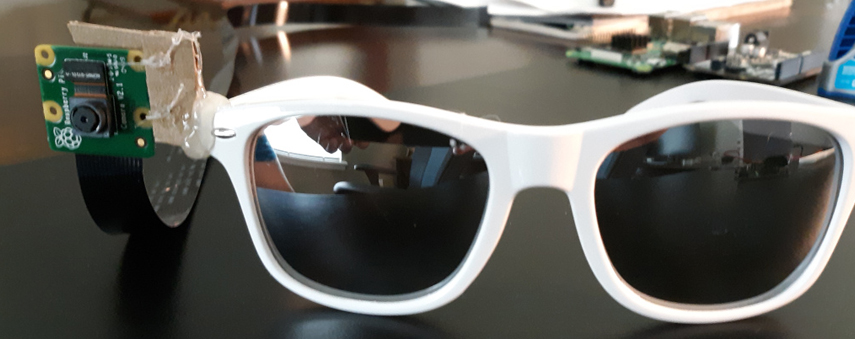Check out the homemade AI shades this software engineer made

Credit: Nick Bild
Software engineer Nick Bild created sunglasses with a difference: these AI shades can react to motion gestures. We spoke to him to find out more about them.
Artificial intelligence is not easy to teach yourself. It’s not like building a website. AI autodidacts are rare but Nick Bild is a software engineer who had no prior experience of machine learning before teaching himself.
“I have been a professional software engineer for 15 years,” Nick says. “About a year ago I set off on a quest to teach myself about electrical engineering so that I could build the physical devices that I dream up. We live in a fascinating time where hardware and technologies such as AI are quite accessible.”
Recently, Nick created a prototype called ShAIdes. As the name suggests, this contraption is sort of his equivalent to Google Glass. Nick managed to adapt a regular pair of shades with AI, in order to control electronics such as the lights in his house.
How do these AI shades work?
“ShAIdes works by capturing images of the user’s field of view,” says Nick. “These images are classified against two convolutional neural network models: one to detect objects, and another to detect gestures. When the combination of a known object and gesture are detected, an action is triggered.”
A convolutional neural network (CNN) is used in deep learning most commonly to analyse visual imagery. With the ShAIdes, the camera views the gesture in front of the user’s face before making a decision: the action being triggered, as Nick puts it.
This is similar to the way that motion sensors work, only this motion sensor exists within a pair of glasses. It’s not the first AI prototype that Nick has worked on, either.
I have some project ideas involving generative AI and surprising modern uses of old technologies that I’ll be working on in the near future
Nick Bild
“I recently built a project called Doom Air that captures the position a user’s body is in and uses that information to control the action in the video game Doom, which is being projected on the wall in front of the player,” he says. “Another recent project is the Vectron 64, which is a custom 6502-based computer that I built from scratch. The 6502 powered computers such as the Commodore 64, Apple II, and Atari 2600. I decided that about the most improbable peripheral to exist for such a dated computer would be a VR headset, so that’s what I built next: the Vectron VR.”
Nick loves coming up with AI projects that challenge him. He usually comes up with his ideas on his long commute to work and has a number of prototypes under his belt now.
“During one of these drives I was thinking about augmented reality. I realized that probably only a small percentage of the population actually wants a screen of any sort in front of them all the time,” he says of the ShAIdes, suggesting that technophiles can sometimes live in a bubble, working in front of a screen and digesting information from one. “I thought it might be nice to have a completely transparent system that would allow us to augment the real world just by gesturing to the objects around us.”
How easy is it to teach yourself AI?
Learning any language is not easy. When it comes to learning a language that can be used in AI, it may seem completely alien to even the average technology enthusiast, given the complexity of some of the AI models currently out there.
However, Nick says that artificial intelligence is an approachable subject. There are freely available resources to learn from on the internet and Nick himself recommends NVIDIA’s educational material.
“The hardest part is coming up with the idea for a device to build,” he says. “From there, I would recommend breaking the overall goal down into a series of smaller steps. Hammer away at each step in turn, and at the end, you will have a working project.”
Nick has a list of ideas and projects that he would like to tick off one by one in the future. He gives updates to his followers via his GitHub page, working on homemade projects like the ShAIdes whenever he has spare time.
“I have some project ideas involving generative AI and surprising modern uses of old technologies that I’ll be working on in the near future,” he says.
This isn’t the last that we’ve seen of the ShAIdes though. Nick has plans to work on them further and develop them from their basic prototype.
“A few areas for future development are in miniaturization of the device and recognition of more objects and gestures,” he says. “I also envision ShAIdes being adapted for other uses, such as in healthcare and as assistive technology.”
